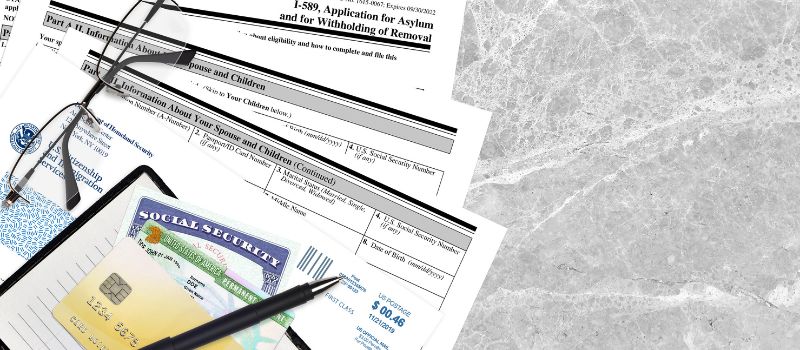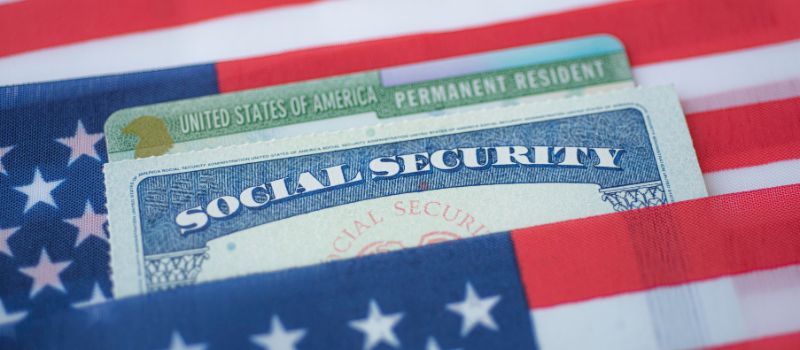Amidst the most recent administration’s cuts to asylum programs, the United States still ranks as one of the top destinations for asylees. Asylees in the United States have a unique benefit – they can move from asylum to green card within a year. After asylum is granted, asylum seekers must have been physically present in America for at least one year.
Generally, they can apply for permanent resident status (green cards) and begin the citizenship process by this time. There is no limit to how many asylum seekers can become permanent residents per year.
Among the situations that may qualify for persecution are those in which individuals or groups have imprisoned or tortured political opponents, fired on protesters, committed genocide against a certain race, or ruled out members of a particular religion from participating in politics.
Green cards for asylees can be easier to attain than other statuses requiring employment or family ties.
Asylum Green Cards: Which section of Nepalese can apply?
Asylum Green Cards are available only if Nepalese satisfy the four conditions are met:
- You must have waited at least one year since you were physically present in the United States.
- Throughout this time, you need to remain a refugee.
- This includes not having resettled anywhere else, and
- Being admissible to the country is a must.
Read Also: US asylum process, eligibility, and applications for the Nepalese willing to file

Permanent Residents Eligibility for the Nepalese asylum seekers
During every stay in the United States, Nepalese asylum seekers apply for green cards.
Adjustment of status is the process involved on it. It is necessary to fulfil the following four requirements for any Nepalese asylee to become a permanent resident:
- The Nepalese asylum seeker was physically present in the United States for a year.
- Primary Nepalese asylees continue to meet refugee definition, or derivative asylees continue to be the spouse or children of the principal asylee.
- In no foreign country has any Nepalese asylees been permanently resettled.
- When undergoing examination for adjustment of status, Nepalese asylees are admissible as immigrants to the United States, subject to individual exceptions and waivers.
The application process for the Asylum Green Card
Applicants for LPR status must be asylees who have physically resided in the United States for at least one year following their asylum. Applications must be filed on Form I-485, Register Permanent Residence or Adjust Status.
By submitting Form I-485, Application to Adjust Status, and any necessary supporting documentation, Nepalese asylum seekers can adjust their Status from asylum to green card. Standard documentation for adjustment of Status includes:
- Application for Adjustment of Status, Form I-485
- Documentation of Asylum Status
- Proof of One-Year Physical Presence in the U.S.
- Government-issued photo identification document with photocopies of two original passport-style photographs
- Your birth certificate (if you have one)
- Copies of your passport page with your admissions or parole stamps (issued by a U.S. immigration officer) (if possible)
- A copy of your I-693, Report of Medical Examination and Immunizations
Is it possible to apply for an Asylum Green Card for any Nepalese family members ?
If you filed for asylum with your family members, and they received derivative asylum along with your approval, then you would receive derivative asylum. If a person remains asylee, they can apply for a Green Card after a year of physical presence in the U.S. It is up to them to use for their Green Cards with or without your participation.
The family members who wish to apply for Green Cards must each submit a Form I-485, along with the required evidence and fees. If you and your family members complete separate applications, you can mail them to USCIS together or separately.
If you want your family members to apply for derivative Asylum Green Cards, they will need to submit some additional documents in addition to those listed above.
Please submit your marriage certificate and asylum letter with the Green Card application of your spouse.
You must include your child’s birth certificate with their Green Card application if they are applying for one. Along with their application, they must submit a copy of their asylum approval notice.
Read Also: The illegal promise of a Nepali American Dream

Frequently Asked Questions
- What is the processing time for getting a green card for a Nepalese asylee?
After a year of being an asylee, you can submit your adjustment of status application. Approval of your application should take at least four months; in some cases, it may take over a year to be approved.
2. Is it possible for a Nepalese asylum seeker to be denied a green card?
Officials of the Department of Immigration will not read judge asylum claims. Nevertheless, suppose new evidence indicates the asylum applicant was not a refugee at the time of their asylum grant. In that case, the USCIS officer may deny adjustment of Status or even terminate their asylum status.
3. Is a green card interview required for asylees?
Most applicants are not required to attend an interview and receive their green cards by mail once approved. If any questions arise regarding an applicant’s application, some may get invited for an interview.
4. What is the duration of asylee status?
Since refugees and asylees have indefinite immigration statuses, they are eligible for employment incident to their Status.
5. Is it possible to deport an asylee?
A person can be deported (also called removed) when the federal government orders them to leave the country. … The federal government cannot deport asylees. Asylees’ Status as refugees can get revoked if the government has certain grounds.
6. What is the legal Status of pending asylum?
Having applied for asylum and awaiting a decision on your application will give you a pending status. A pending asylum application means you are no longer in the United States unlawfully. As your application is processed, you can remain in the United States.
7. Do refugees from Nepal have the right to vote?
The same taxes apply to refugees as to U.S. citizens, including employment, property, sales, and other taxes. They cannot vote, however.










